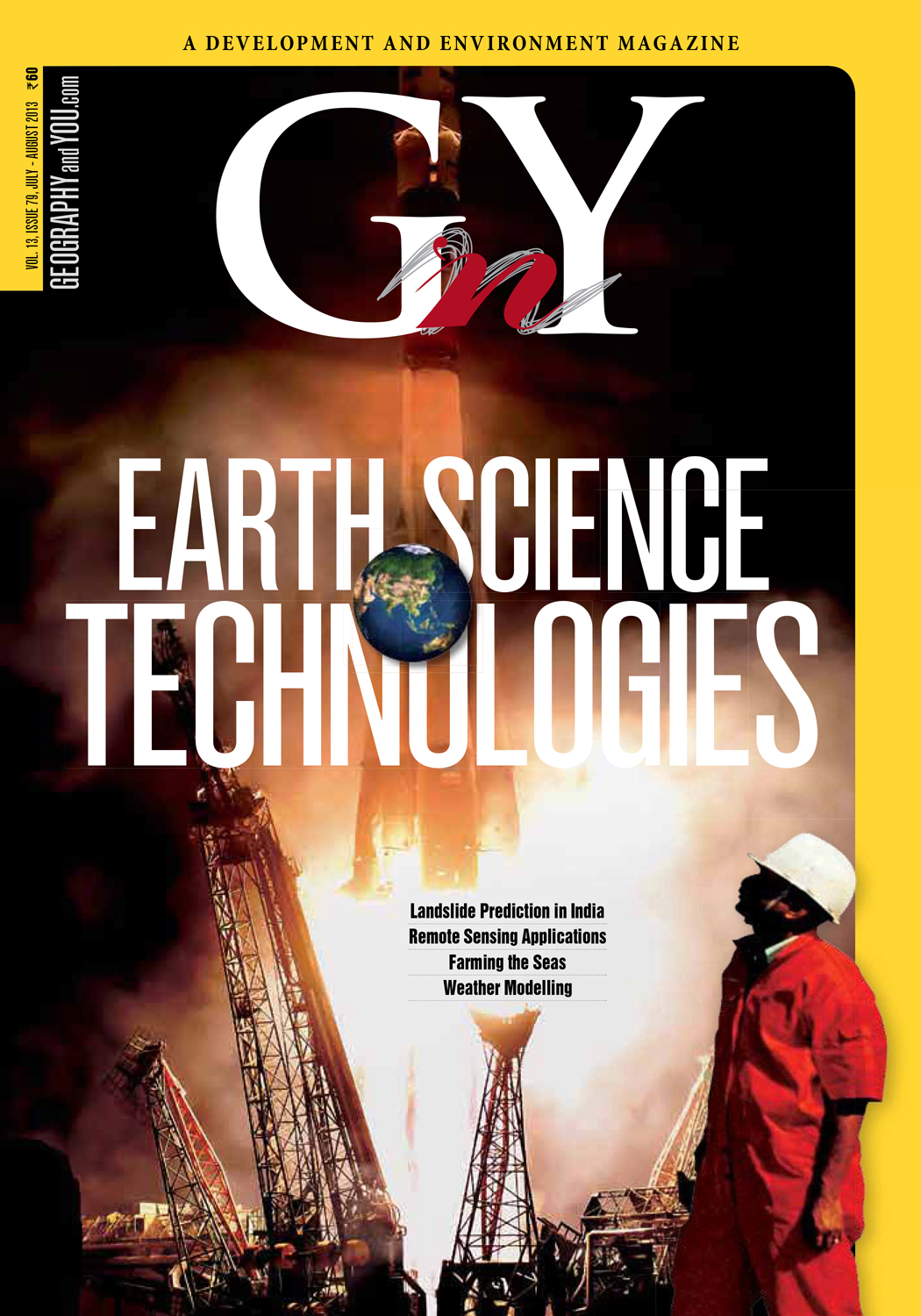
Inside this issue
View Point
Earth Science Technologies
This article provides glimpses of work related to remote sensing applications for earth sciences carried out at Space Applications Centre, Ahmedabad jointly with a large number of institutions in the country.
With maximum sustainable yield in capture fisheries achieved, technological innovations to increase yields seem imperative. In a recent breakthrough cages that can withstand turbulent seas have been developed by National Institute of Ocean Technology. The organisation is also involving the fisher community of Olaikuda for a large scale culture.
Nitrogen-15 is an isotope that is useful in determining how much of the anthropogenic carbon dumped in the atmosphere is taken up by the oceans. Our efforts in the Indian Ocean to determine this rate is outlined here.
With the ever increasing demands of the society, it is necessary to identify issues and concerns related to water, as well as develop and implement plans with solutions that are environmentally, socially and economically sustainable at various levels. There is seldom proper coordination seen in the water resource projects which is essential for ensuring collective sustainability.
A seamless approach across spatial and temporal scales using the earth system modelling framework is the key for providing realistic prediction of weather and climate. Ensemble based forecasting and data assimilation techniques are being used for estimating the uncertainty and providing probabilistic forecasts to end users.
Methane from gas hydrate deposits could be a viable energy alternative. The investigations in Krishna-Godavari (KG) and Mahanadi offshore basins and Andaman Sea have established the occurrence of gas hydrate in varied forms. However, the KG offshore basin is one of the most promising petroliferous basins.
Air pollution is a growing problem in India. Factories, power plants, automobiles and dust, smoke from bush fires and volcanic eruptions are responsible for pollution. The deterioration of air quality thus results into a corresponding increase in health problems, eventually inducing the monitoring of air quality and its prediction as a prime necessity in day-to-day life.
The authors are scientist C, scientist F, scientist B and director, respectively, at Indian National Centre for Ocean Information Services, Hyderabad and secretary, Ministry of Earth Sciences. srinivas@incois.gov.in
The role of marine organisms as providers of ecosystem services in the South-East and North-East Arabian Sea upwelling systems is elucidated in this essay. Services such as primary production, fish production, carbon sequestration, algal blooms and ecotourism are thus studied.
Concept Counter
Quantitative methods in geography and its broad distinctions have been discussed in the ESSAY—with a focus on the mapping of geographical distribution.
India Outdoors
Sunrise at Tiger Hill, 13 km from Darjeeling was an experience to remember—for all the wrong reasons...
In brief
Dear readers Our learnings about earth systems begin from pre-puranic times when man started working out the hows and whys of storms, eclipses, monsoon and so on. Modern earth science however has specialised its outlook with well defined study areas, which broadly encompasses geology, meteorology,

